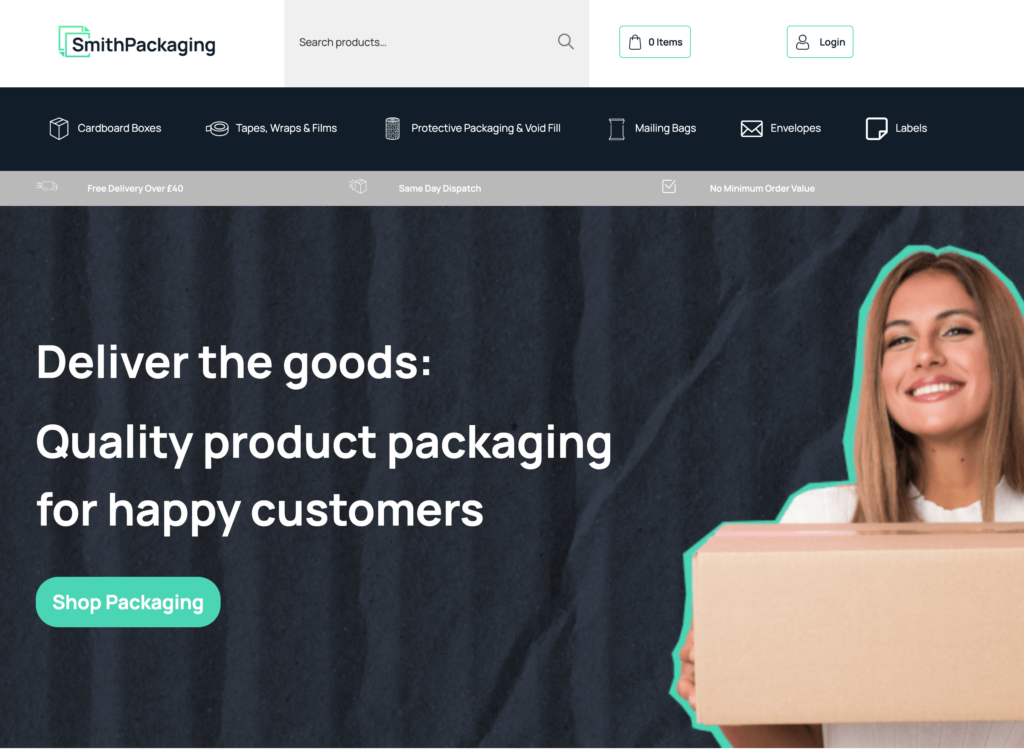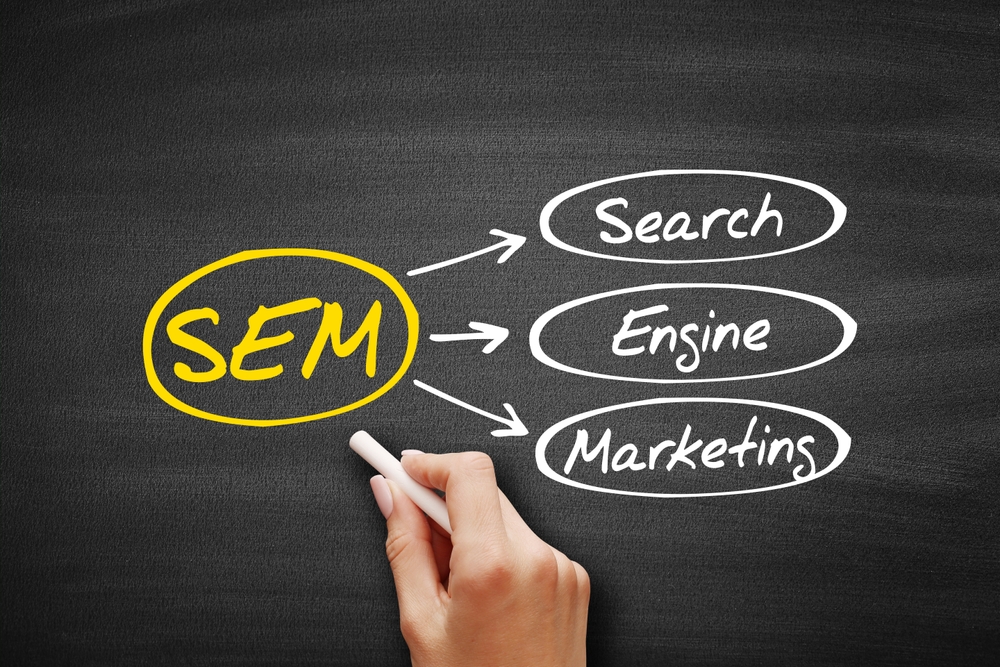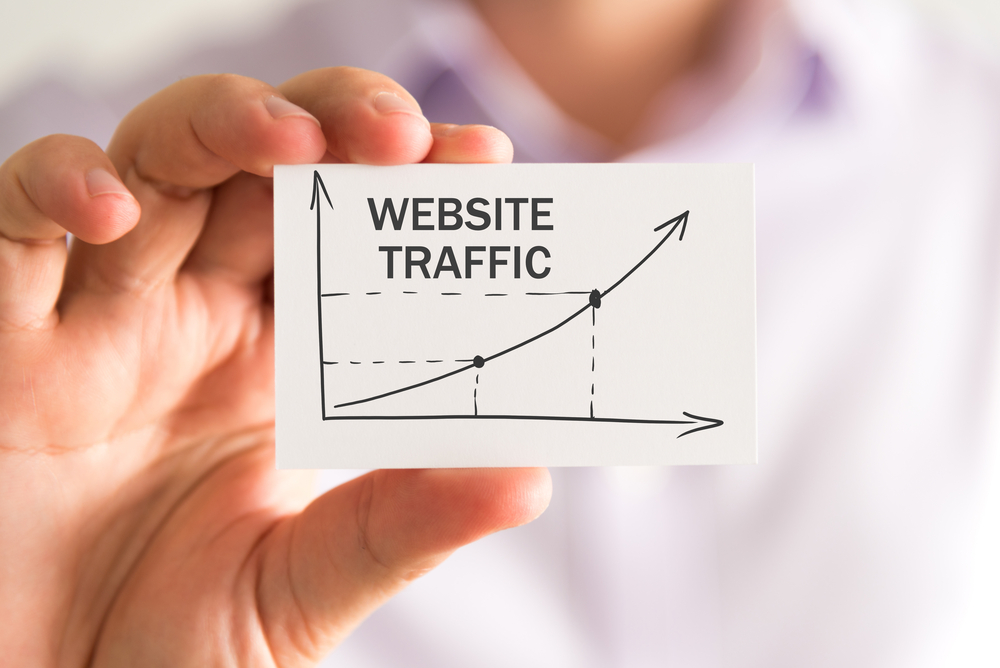
When it comes to digital marketing strategies, two terms you often come across are SEO and SEM. While both are aimed at improving a website’s visibility in search engine results, they differ in their approach and objectives.
Let’s take a closer look at some of the key differences between SEO and SEM.
| SEO | SEM | |
|---|---|---|
| Approach | Organic | Paid |
| Goal | Drive organic traffic | Increase visibility through paid ads |
| Timeframe | Long-term | Immediate |
| Cost | Lower cost per click | Higher cost per click |
SEO (Search Engine Optimisation)
- SEO focuses on optimising a website organically to improve its visibility in search engine rankings.
- The primary goal of SEO is to drive organic, unpaid traffic to a website.
- It involves various techniques such as optimising website content, meta tags, site structure, and backlink building.
- SEO results take time to show, as search engines need to crawl and index the website before the changes are reflected in the rankings.
- It requires continuous effort and monitoring to maintain and improve search engine rankings.
SEM (Search Engine Marketing)
- SEM involves paid advertising campaigns to promote a website and increase its visibility in search engine results.
- It includes strategies like pay-per-click (PPC) advertising, display ads, and remarketing.
- SEM campaigns can be set up quickly and deliver immediate results, as ads are displayed prominently in search engine results.
- It provides advertisers with more control over targeting specific keywords, demographics, and geographic locations.
- SEM can be more expensive compared to SEO, as advertisers have to pay for each click or impression their ads receive.
Which is better for your business?
When it comes to choosing between SEO and SEM for your business, there is no one-size-fits-all answer. It ultimately depends on your goals, budget, and timeframe.
Here are a few factors to consider:
1. Cost-effectiveness
- While SEO can take time and effort to see results, it can be more cost-effective in the long run. Once you achieve higher rankings, you can potentially drive traffic and generate leads without ongoing advertising costs.
- SEM, on the other hand, involves paid advertising campaigns. While it can deliver immediate results, it can also be more expensive, especially for competitive keywords.
2. Targeted audience
- With SEO, you can focus on optimising your website to attract organic traffic from search engines. This can help you reach a wider audience and build brand visibility.
- SEM allows you to target specific keywords and demographics through paid ads, ensuring that your message reaches a more targeted audience.
3. Speed of results
- SEO is a long-term strategy that requires patience. While it can take months to see significant improvements in rankings, the benefits can be long-lasting.
- With SEM, you can see immediate results as soon as your ad campaign is live. This can be particularly beneficial if you have time-sensitive promotions or want to quickly boost visibility.
4. Flexibility and control
- SEO provides less control over how your website appears in search results. You can optimise your website and content, but search engines ultimately decide how to rank your pages.
- SEM gives you more control over your ad campaigns, allowing you to set budgets, target specific keywords, and customise ad copy. This can provide more flexibility in reaching your specific business objectives.
Here’s a quick decision maker:
If you’re want instant results and happy to pay for in the shorter-term – go for SEM.
Want to play the long game with a manageable monthly retainer? SEO is the right steer for you.
But what if you want both quick results and long-term gains? Opt for both.
SmithPackaging – a client who does both SEO and PPC

SEO and SEM shouldn’t be a either-or choice. Investing in both combines strengths to help you dominate the search engine results page. No matter where people look, you’ll be there.
That’s what happened for SmithPackaging.
There were a cardboard box manufacturer with superior products, but no visibility. With Lightbox, we 5.86x their sales over a 12 months period with SEO, PPC, and Social Media.
Now, they’re focusing on expanding their warehouse and product range.
Let’s delve a bit deeper
If you’re looking for a deeper comparative analysis, we’ve got you covered. The rest of our articles covers:
- Definition of SEO and SEM
- How they both work
- The benefits of each
Let’s start.
What is SEO?

Search Engine Optimisation is the process of improving a website’s visibility and ranking on search engine results pages (SERPs). The goal of SEO is to drive organic (unpaid) traffic to a website by increasing its visibility on search engines like Google.
Here are a few key points to help you understand SEO:
- SEO involves both on-page and off-page optimisation techniques to improve a website’s ranking.
- On-page SEO includes optimising webpage content, keywords, meta tags, and URL structure, among other factors.
- Off-page SEO focuses on building backlinks, social media promotion, and other external factors that influence search engine rankings.
- SEO is a long-term strategy that requires consistent effort and monitoring to see results.
- Search engines rank websites based on relevance, authority, and user experience factors.
Understanding the importance of SEO can be highlighted with some statistics:
| Statistic | Value |
|---|---|
| 75% of users never scroll past the first page of search results | Source: HubSpot |
| Websites ranked number one on Google receive an average CTR (click-through rate) of 31.7% | Source: Backlinko |
| 61% of marketers say improving SEO and growing organic presence is their top inbound marketing priority | Source: HubSpot |
How does SEO work?
SEO can be split into 5 main areas of work. Here’s a breakdown:
1. Keyword Research
- Identify relevant keywords and phrases that people are searching for in relation to your content.
- Use tools like Google Keyword Planner or SEMRush to find popular and relevant keywords.
2. On-page Optimisation
- Optimise your website’s structure, meta tags, headings, and content to align with your targeted keywords.
- Create high-quality and engaging content that provides value to your audience.
- Ensure your website is mobile-friendly, as mobile optimisation plays a crucial role in search rankings.
3. Technical SEO
- Ensure your website has proper crawlability and indexability for search engines.
- Improve site speed and performance by compressing images, using caching, and minimising code.
- Fix broken links and ensure proper redirection to avoid any negative impact on user experience.
4. Off-page Optimisation
- Build high-quality backlinks from reputable websites to increase your website’s authority
- Engage with your audience on social media platforms and encourage them to share your content.
- Guest blogging and influencer collaborations can also help to increase your website’s visibility.
5. Monitoring and Analysis
- Regularly monitor your website’s performance using tools like Google Analytics and Search Console.
- Analyse metrics such as organic traffic, bounce rate, and keyword rankings.
- Identify areas for improvement and make necessary optimisations based on data-driven insights.
Remember, SEO is an ongoing process and requires continued efforts to maintain and improve your website’s visibility in search engine results.
The benefits of SEO
There are numerous benefits to implementing effective SEO strategies for your website. Let’s explore some of the key advantages:
1. Increased visibility: By optimising your website for search engines, you can improve its visibility in search results. This means that more people are likely to find your website when they search for relevant keywords, increasing your organic traffic.
2. Cost-effective: Unlike paid advertising, SEO is a long-term investment that can yield significant returns over time. While initial setup and ongoing maintenance may require resources, the benefits of improved organic rankings can bring in consistent traffic without the need for continuous ad spend.
3. Targeted traffic: SEO helps you reach your target audience more effectively. By optimising your website for specific keywords, you can attract visitors who are actively searching for products or services related to your business. This increases the chances of converting them into customers.
4. Credibility and trust: Appearing on the first page of search results instils a sense of credibility and trust in users. People tend to trust the websites that appear higher in the organic rankings, as they perceive them as more authoritative and reliable.
5. Long-lasting results: Unlike paid advertising, where your visibility diminishes as soon as you stop paying, SEO can provide long-lasting results. By consistently improving your website’s SEO, you can maintain and even enhance your rankings over time, which can lead to sustained organic traffic.
6. Competitive advantage: In today’s digital landscape, where competition is fierce, having a strong presence online is crucial. By investing in SEO, you can gain a competitive advantage over businesses that neglect organic search, helping you capture a larger share of the market.
7. Better user experience: SEO not only focuses on optimising your website for search engines but also for the users. By improving the structure, navigation, and overall user experience of your website, you enhance its usability and make it more appealing to visitors.
These are just a few of the benefits that effective SEO can provide. By investing in SEO, you can enhance your online presence, attract more targeted traffic, and ultimately grow your business
When should you not invest in SEO?
Deciding when to invest in SEO can be a challenging process. There are times when it might not be the best option for your business. Here are some scenarios where SEO may not be the best fit:
- When you need immediate results: SEO is a long-term investment. It can take months or even years to see the full benefits. If you need immediate results for a product launch or holiday season, for example, SEM may be a better option.
- When no-one knows your product: If you’ve created an amazing, innovative product that no one searches for, SEO isn’t for you at this moment. You need to build awarness first.
- When your target audience doesn’t use search engines: If your target audience doesn’t typically use search engines to find the products or services you’re offering, investing in SEO might not yield the desired results.
- When you can’t commit to the ongoing work needed: SEO requires consistent effort and updates. If you don’t have the time or resources to commit, the chances of seeing significant results are slim.
Not sure if SEO is for you? Get a straight answer from us.
What is SEM?

SEM, or Search Engine Marketing, is a digital marketing strategy that focuses on increasing visibility in search engine results pages (SERPs) through paid advertising.
Unlike SEO (Search Engine Optimisation), which aims to improve organic search rankings, SEM involves paying for ad placements to appear above or alongside the organic search results. It is also commonly referred to as PPC (Pay-Per-Click) advertising.
| SEM (Paid Advertising) | SEO (Organic Search) |
|---|---|
| Requires budget | No direct cost |
| Instant results | Takes time to see results |
| Ad placement is controlled | Ad placement is dependent on search algorithms |
| Targeted based on ad settings | More reliant on search engine algorithms |
| Can be adjusted quickly | Changes may take time to reflect in search rankings |
How does SEM work?
SEM, or Search Engine Marketing, is a digital marketing strategy that involves promoting websites by increasing their visibility in search engine results pages (SERPs) through paid advertising.
Essentially, SEM is all about driving targeted traffic to a website through paid advertising efforts.
Here’s how SEM works in a nutshell:
1. Keyword Research: The foundation of SEM lies in identifying the relevant keywords that potential customers might use when searching for products or services. This involves thorough research to find keywords that strike the right balance between search volume and competition.
2. Creating Campaigns: Once the keywords are identified, the next step is to create targeted ad campaigns based on those keywords. These campaigns are usually created using advertising platforms like Google Ads or Bing Ads.
3. Ad Auction: When a user searches for a specific keyword, search engines conduct an auction to determine which ads will be displayed. Various factors, such as bid amount, ad quality, and relevance, determine the position and visibility of the ads.
4. Ad Display: If your ad wins the auction, it will be displayed to the user alongside the organic search results. The placement and visibility of the ad may vary based on the quality score and bid amount.
5. Clicks and Conversions: When users click on your ad, they will be directed to your website or a specific landing page. This is where your website’s design, content, and offerings come into play to convince visitors to take the desired action, whether it’s making a purchase or filling out a form.
Here are a few key points about SEM:
- SEM is a paid advertising method to increase website visibility on search engines.
- Effective keyword research is essential to target the right audience.
- Ad campaigns are created based on the selected keywords.
- Ad placement is determined by an auction that considers factors like bid amount and ad quality.
- The goal is to drive clicks and conversions on the website.
In summary, SEM allows businesses to advertise their products or services on search engines and reach potential customers actively searching for them.
It provides a targeted approach to increase website visibility and drive traffic, ultimately leading to more conversions.
The Benefits of SEM
The world of digital marketing can be overwhelming, with various strategies and techniques to consider. When it comes to boosting your online visibility, two terms that often come up are SEO (Search Engine Optimisation) and SEM (Search Engine Marketing).
While SEO focuses on optimising your website to rank higher in organic search results, SEM takes a broader approach by incorporating paid advertising to drive traffic to your site.
Here are some key benefits of SEM:
1. Instant Visibility
With SEM, you can quickly increase your online visibility and reach a wider audience. Unlike SEO, which can take time to yield results, SEM allows you to place ads on search engine results pages (SERPs) almost immediately. This means that potential customers will see your website at the top of the search results, giving you a competitive advantage over your competitors.
2. Targeted Advertising
SEM offers precise targeting options that allow you to reach your ideal audience. You can create highly specific ad campaigns based on factors such as location, demographics, interests, and even search terms. By targeting the right audience, you can increase the chances of attracting qualified leads to your website, ultimately boosting conversions and sales.
3. Measurable Results
One of the significant advantages of SEM is its ability to provide measurable results. Unlike traditional forms of advertising, where it can be challenging to gauge the effectiveness of your campaigns, SEM platforms offer detailed analytics and reporting tools. These tools allow you to track key metrics such as clicks, impressions, conversion rates, and return on investment (ROI). By analysing this data, you can make informed decisions about your marketing strategies and optimise your campaigns for better results.
4. Flexibility and Control
SEM provides a high degree of flexibility and control over your advertising campaigns. You can set a daily budget for your ads, ensuring that you stay within your advertising spend limits.
Additionally, you have the option to adjust your ad settings, keywords, and targeting parameters in real-time, allowing you to fine-tune your campaigns for optimal performance.
This level of control helps you adapt to changing market conditions and maximise the effectiveness of your marketing efforts.
In summary, SEM offers several benefits for businesses looking to increase their online visibility. It provides instant visibility, targeted advertising capabilities, measurable results, and flexibility and control over your ad campaigns.
By leveraging SEM alongside other digital marketing strategies, you can drive more traffic to your website, increase brand awareness, and ultimately achieve your online marketing goals.
When SEM Might Not Be Your Best Bet
Now that we’ve explored the ins and outs of SEM, let’s take a slight detour and consider some scenarios where SEM might not be the ideal choice. It’s important to remember that while SEM can be incredibly powerful, it’s not always the right fit for every business or every situation. So, when is SEM not your best bet? Let’s dive in.
- Tight Budget: If you’re in the early stages of your business or operating on a shoestring budget, SEM might not be ideal for you. Remember, you’re paying every time someone clicks on your ad. The costs can add up quickly, especially in highly competitive markets.
- Long Sales Cycle: Products or services with a long sales cycle may not benefit as much from SEM, as you’re essentially paying for potential leads rather than confirmed sales. In this case, SEO might be a more cost-effective option.
- Irrelevant Target Audience: If the target audience for a business’s products or services does not actively use search engines or is unlikely to discover the business through online searches, investing in SEM may not yield the desired results. It’s important to understand the preferred channels and behaviours of the target audience before deciding to invest in SEM.
- High Organic Search Ranking: If a business already has a strong organic search presence and ranks well for its target keywords, investing in SEM may not be necessary. The business can continue to focus on organic search engine optimisation (SEO) efforts to maintain or improve its rankings without the need for paid advertisements
- Lack of Resources or Expertise: Successful SEM campaigns require expertise in keyword research, campaign setup, monitoring, and optimisation. If a business lacks the necessary resources or knowledge to effectively manage SEM campaigns, it may be better to invest in other marketing channels that align with their capabilities.
- Ineffective Conversion Funnel: If a business’s website or landing pages are not optimised for conversions, investing in SEM may lead to poor return on investment (ROI). It’s essential to have a clear and effective conversion funnel in place before driving traffic through SEM.
Ultimately, the decision to invest in SEM should be based on a thorough analysis of the business’s goals, target audience, budget, competition, and available resources.
It’s crucial to weigh the potential benefits against the costs and consider alternative marketing channels that may be more suitable for the business’s specific circumstances.
Get more qualified traffic to your website

Let’s recap the major differences:
| SEO | SEM | |
|---|---|---|
| 1. | Takes time to see results | Immediate visibility |
| 2. | Long-term ROI | Immediate traffic |
| 3. | Free clicks from organic search | Requires budget for every click |
| 4. | Cost-effective over time | Can be expensive if not managed carefully |
Both SEO and SEM have their own strengths and weaknesses, so it’s important to consider your specific goals and budget when deciding which approach is right for you.
In many cases, a combination of both can yield the best results.
Here are some questions to ask yourself:
- Can our business withstand the next 12 months for a bigger ROI or do you need results now?
- Is our Gross Profit high enough to absorb the higher cost of PPC?
- Is our industry super-competitive on search?
- Do our customers search for the product – and when do they search for it?
- Do we have the expertise and resources to manage this in-house?
Remember, SEO and SEM are not standalone strategies. They work best when integrated with other digital marketing efforts, such as content marketing, social media marketing, and email marketing.
So, whether you choose to focus more on SEO or SEM, the key is to continually monitor and refine your strategies to stay ahead in the ever-evolving world of online marketing.
Game-changing strategies for your business
Learning SEO takes time. Getting the results, even longer.
PPC is an expensive lesson if you’re not confident. Especially if you need leads yesterday.
With Lightbox, you get the results without the learning curve and wasted money.

